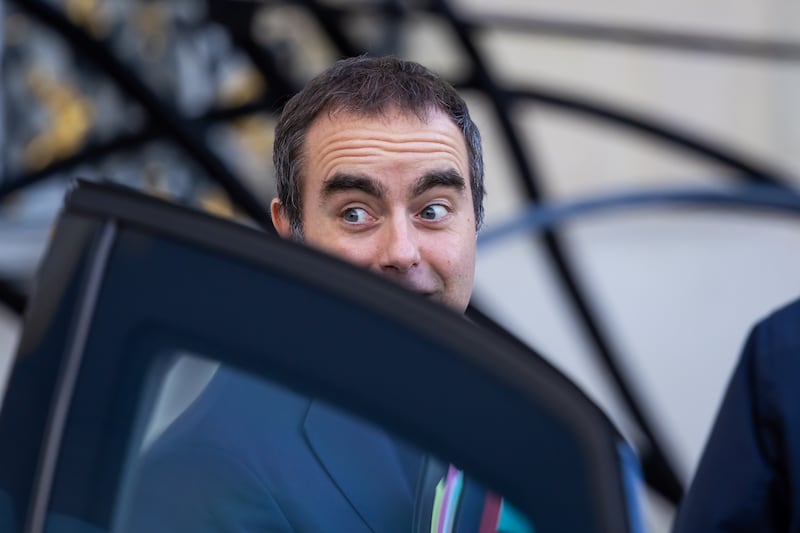It’s close on 60 years since, as an eager recruit to the UK Campaign for Nuclear Disarmament (CND), I joined in a march from Aldermaston to London’s Trafalgar Square.
I found myself in a Scottish contingent and happily borrowed their accent in a swinging protest chorus of “Och, och, get oot o’ Holy Loch, for we dinnae want Polaris!” That was the Scottish navy base for British submarines armed with US-built Polaris ballistic nuclear missiles.
Today, Wikipedia tells me, four of the UK's Vanguard submarines, each with up to 16 Trident nuclear ballistic missiles, are stationed in the Clyde, 40km west of Glasgow. So much for all our marching. So much, probably, for all the appeals by protesters this weekend at the strongly defended fringes of Cop26.
What were we in CND afraid of? Just the death of western civilisation, I suppose. But today’s protesters hoist placards about a need to save the planet and protect the future of the human race.
As an aged 88-year-old atheist, I have no fancies of an afterlife. And while I’m allowed some fellow feeling with the Cop26 protesters, years of acquaintance with evolutionary biology may have shaped a cooler view of humanity’s place in the natural world and the planet’s ability to shrug us off when it’s done with us.
Antler span
Stephen Jay Gould had much to do with such engagement. This brilliant American scientist, who died in 2002, once knelt in thick dust on top of glass cabinets in the Natural History Museum to measure the antler span of giant Irish deer. He went on, as Harvard's leading palaeontologist and a prolific and popular writer, to radicalise ideas on the origins and influence of human life on Earth.
In Gould’s theory of “punctuated equilibrium”, it was the sudden extinction of the dinosaurs by a meteoric impact that paved the road for evolution of mammals, including humans. Our arrival as “an accident of nature” is presented in his fascinating book Wonderful Life, downloadable for free online.
That we’re a remarkably able freak of evolution is greatly due to the size of our brains. In his book Sapiens, a primer on human history, Israel’s Yuval Noah Harari charts the extraordinary growth in brain size from the several earlier versions of humans to our modern average of 1,200 to 1,400 cubic centimetres.
Why that happened, we don’t know. But our leap to the top of Earth’s food chain as the planet’s dominant predator seems to have been sudden – too sudden, as Harari fears, to have relinquished our fears and anxieties as earlier underdogs of the savannah. This has left us seemingly confident, but, he suggests, “doubly cruel and dangerous” – and perhaps also unable to trust each other in addressing a planetary crisis.
Giant brains
Our giant brains could, on the other hand, fit the final world scenario from Britain's James Lovelock, still eagerly attentive at 101.
As originator of Gaia, the revolutionary concept of Earth as a living, self-regulating organism, Lovelock sees humanity as “a freakish one-off”, alone in the universe. But in his latest book, Novacene, he greeted with “a shout of joy” the creation of computer-generated artificial intelligence that can think and act “10,000 times faster than mere mammals”.
While Lovelock acknowledges our planet as old and frail, its life increasingly threatened by global warming and random asteroids, he thinks that humans will eventually engage with this hyperintelligence, becoming “cyborgs” in a partnership to defend a living Earth.
As this “new life” improves and replicates itself, he argues, the natural selection of Darwin will be replaced by much faster, intentional, cyborg-driven selection. “We must recognise,” he concludes, “that the evolution of cyborgs may soon pass from our hands.”
This chilling, elitist view of the human future is not one likely to appeal to the young protesters in Glasgow. Nor might the reminder, from Gould and many others, that the planet is well able to survive an ultimate interlude of human desecration. This might leave its biodiversity reduced to bacteria, insects and mites, but “on geological scales, our planet will take good care of itself and let time clear the impact of human malfeasance”.
The cooler evolutionary view of homo sapiens as a species with big brains and backache does offer some perspective to an aged specimen like me. But such resignation is not the business of the young. With many and urgent “meantimes” in their future, they will fight against the procrastinating pseudo-cyborgs at Cop26 or the risk of succession by beetles and mites.




















